Keeping your garden looking stunning during the cold season can be a challenge. But, with the right winter plants, you can enjoy gorgeous blooms even as the snow falls. Here are our picks for ten cold-hardy perennials and one annual plant, guaranteed to make your garden pop with color in winter.
Snowdrops

Image: Peter Milto / Shutterstock.com
Snowdrops are usually associated with springtime, but did you know they can bloom as early as December? Start by planting some bulbs in the fall in any part of your garden that gets light shade. These plants don’t take long to grow, and before you know it, they will add a touch of springtime to your winter garden.
Japanese Camellia

Image: sei.N / Shutterstock.com
This is a fantastic choice if you’re looking for an evergreen shrub that blooms in a wide range of colors. Japanese Camellia doesn’t need much maintenance and prefers growing in partial shade and slightly acidic soil. It can start blooming as early as October and will continue to bring your garden to life until mid-spring.
Winter Honeysuckle
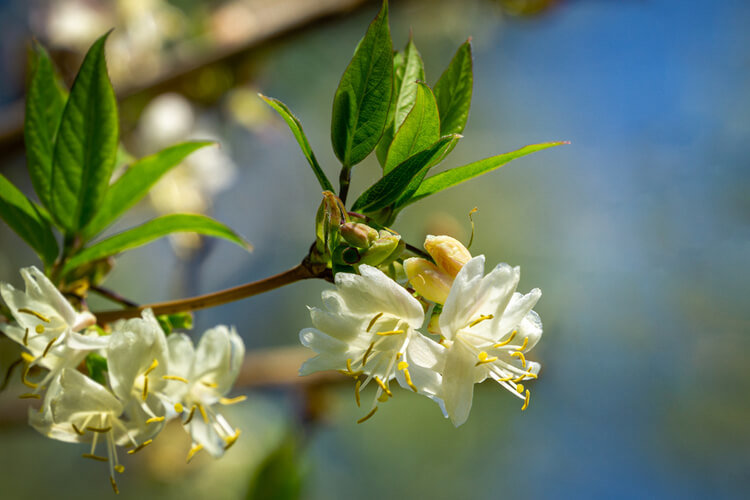
Image: Marinodenisenko / Shutterstock.com
Although it’s not as popular as the summer-flowering varieties, Winter Honeysuckle is a great cool-season shrub with its small, sweet-scented blooms. Unpretentious and easy to care for, it can be grown in full sun as well as partial shade and will flower from December until March.
Hellebore
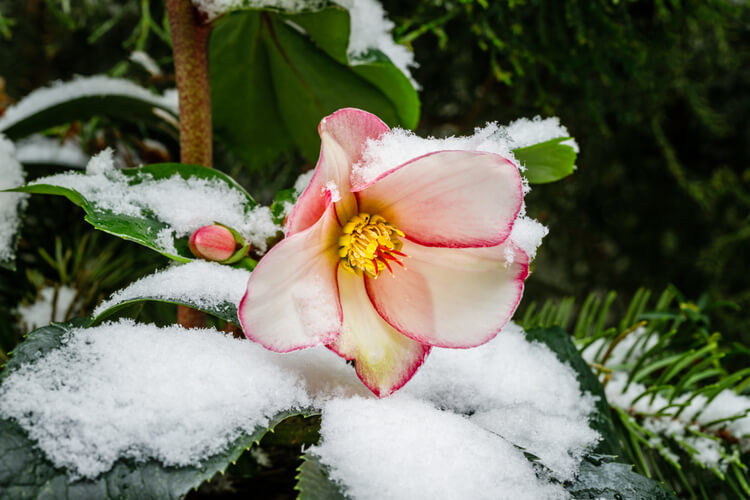
Image: nnattalli / Shutterstock.com
Also known as Christmas Rose, Hellebore is another evergreen perennial shrub with a stunning range of flower colors, from yellow or white to deep red and even blue or green. Growing it is easy yet will take a bit of patience, as hellebores typically bloom three years after sowing. Once established, it starts blooming in December until mid-spring, although it’s not uncommon to see it produce flowers in summer as well.
Mahonia
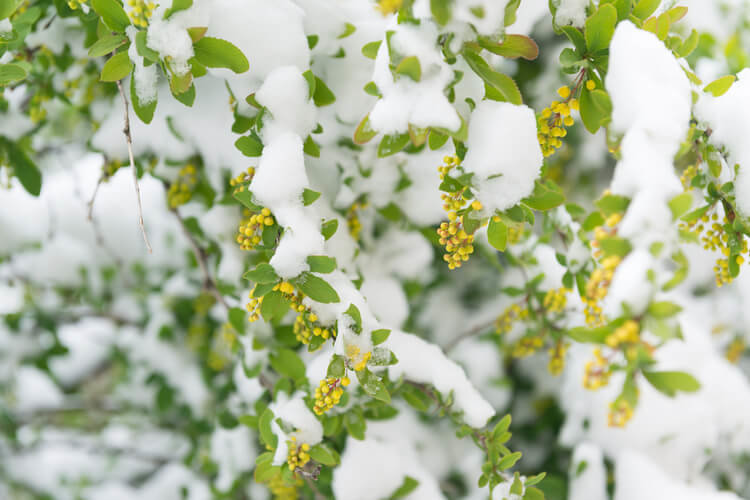
Image: Kraft_Stoff / Shutterstock.com
With its bright clusters of yellow flowers and spiky, holly-like leaves, Mahonia is a veritable wintertime centerpiece in any garden. Plant it in partial shade and rich, well-draining soil, and watch it bloom from late winter until April. In summer, Mahonia will also produce small, blue berries, which provide a tasty treat for wild songbirds.
Winter Heath
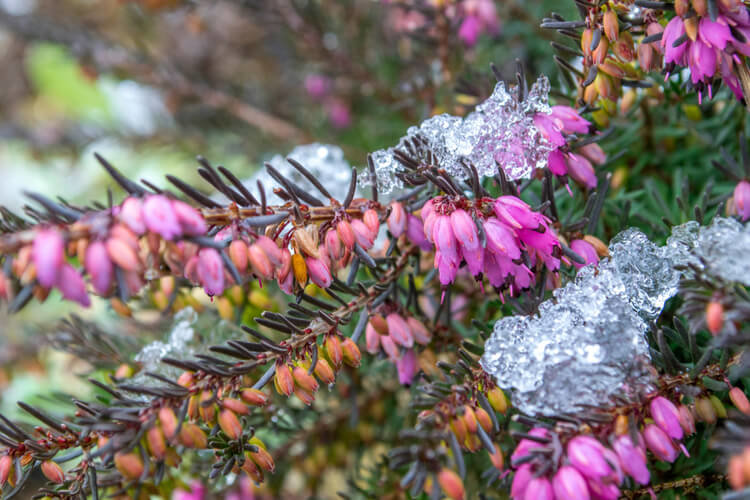
Image: Svitlyk / Shutterstock.com
Heather usually blooms throughout summer, yet this alpine variety is perfect for adding a touch of color during the grey winter months. A small, evergreen shrub, Winter Heath can be used to decorate borders and pathways and also works as a gorgeous ground cover. Its flowers can range in color from light pink to purple, and you can enjoy them from late winter until early spring.
Primrose
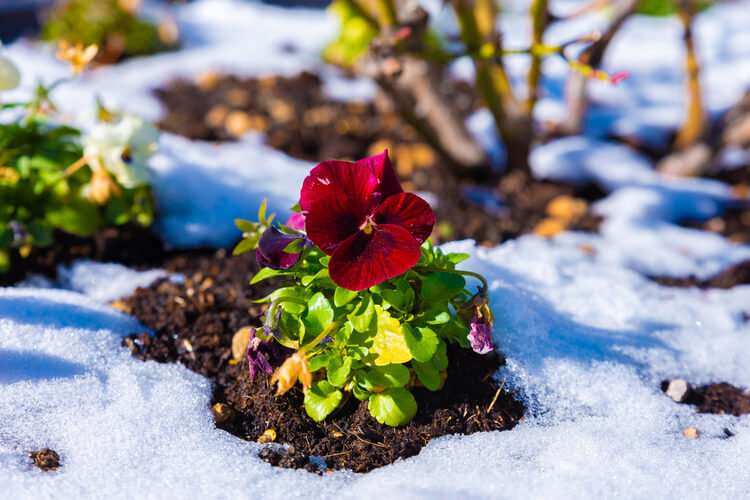 Image: Alessandro Tortora / Shutterstock.com
Image: Alessandro Tortora / Shutterstock.com
One of the most colorful and easy to grow ground cover, Primrose is a must-have plant for any winter garden. It grows best in nutrient-rich soils and partial shade and blooms from December until late spring.
Crocus
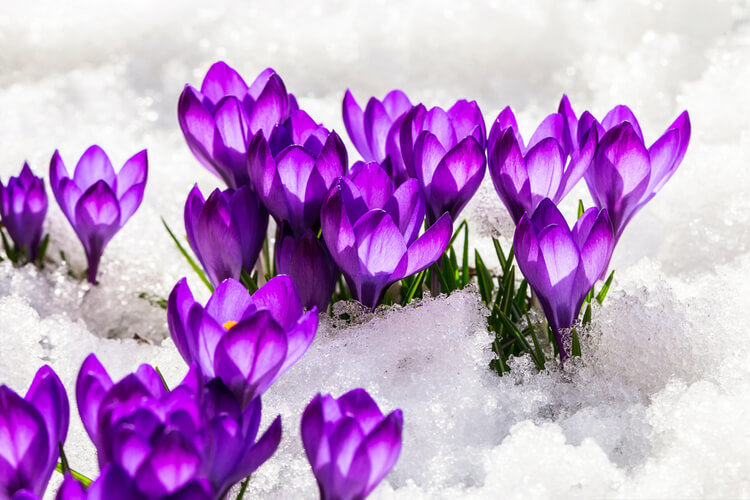
Images: irina02 / Shutterstock.com
Along with snowdrops and primroses, crocuses play a crucial role in an eco-friendly garden, providing bees with a much-needed source of nectar early in the year. Often you will see their white or purple blooms poke through the snow from late winter until early spring. Yet these plants can bloom several times a year if conditions are right, and you can expect a flush as early as late fall.
Fragrant Daphne
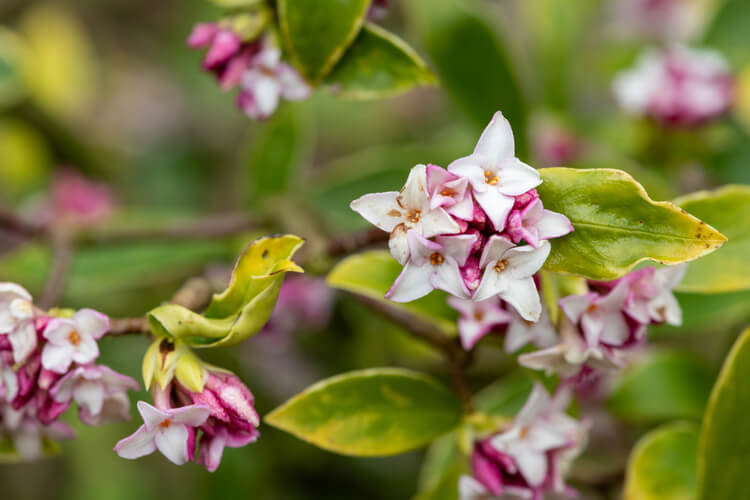
Image: Tom Meaker / Shutterstock.com
Mainly cultivated for its sweet, almost fruity scent, Fragrant Daphne is a versatile evergreen that can be grown as a shrub as well as a border or small hedge. The clusters of tubular, pink flowers typically start blooming from late winter until April. Caring for Fragrant Daphne can be a bit tricky, as the plant takes a while to become established, does not like having its roots disturbed, and needs well-draining soils and plenty of mulch. However, the sweet-scented blooms are well worth the effort.
Ornamental Kale
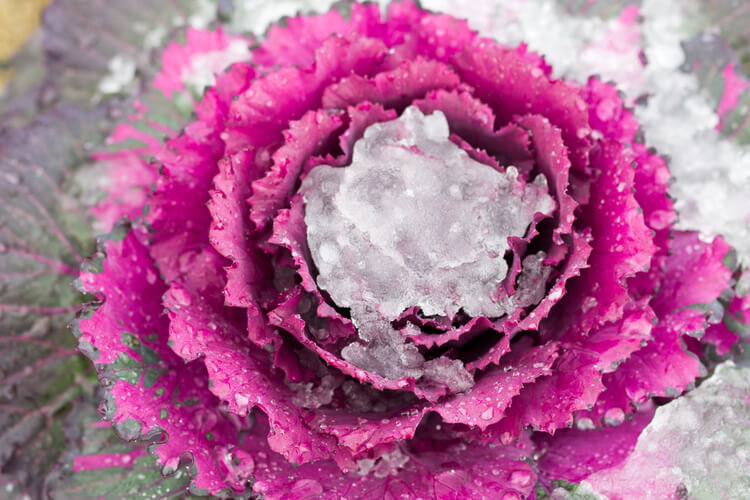
Image: bluebullet / Shutterstock.com
This plant may raise a few eyebrows, but Ornamental Kale has strong ornamental merits, especially in a winter garden. Although it’s an annual, it’s one of the easiest cold-season plants you can grow. Sow the seeds in July, and watch the plants come alive with vivid shades of pink and fuchsia as soon as temperatures drop below 50°F.
Courtesy: point2homes.com
Posted by Teri-Lynn Jones on
Leave A Comment